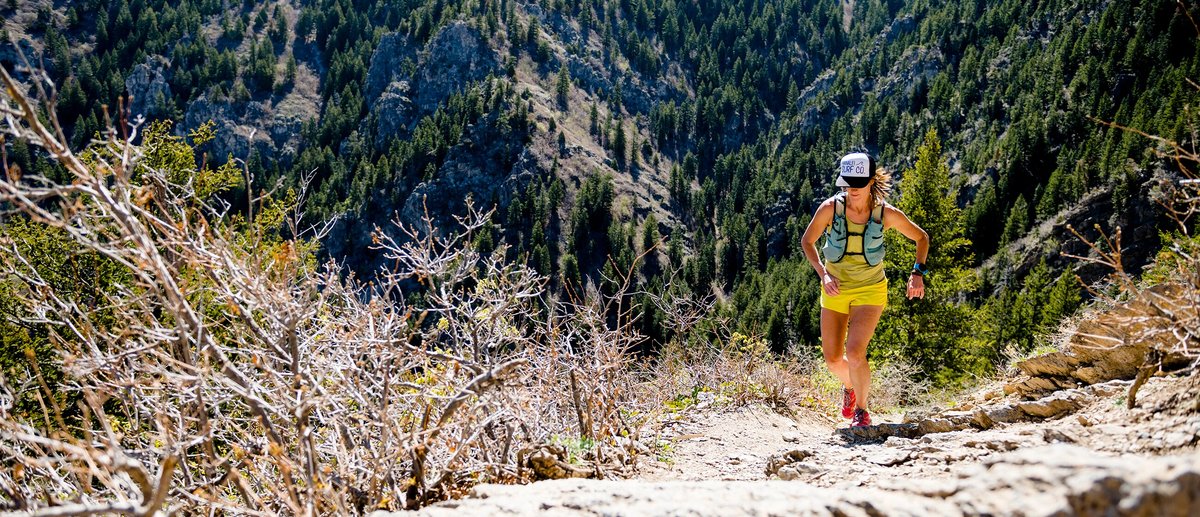
Hooked on Ultrarunning
Ask anyone who’s spent years honing their craft and they’ll tell you it takes countless hours of hard work and dedication, a willingness to reorganize your life to achieve your goals, and a strong support system to help you get there. Backcountry Ambassador Tara Warren knows this all too well. Tara went from someone who dreaded running to an accomplished ultra-runner, who this summer set out to run three 100-mile races in three months. From training tips to recommended gear, Tara reflects on her running career and shares her recommendations for anyone looking to get into long-distance trail running.
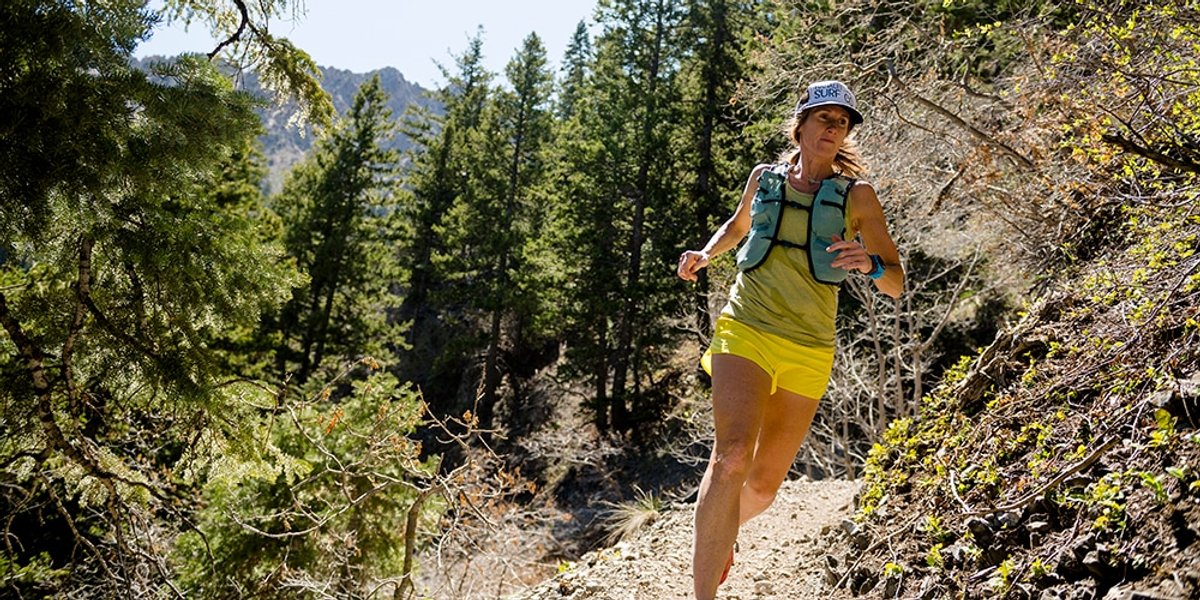
I absolutely love running, but that wasn’t always the case. My running background began in high school, where I joined cross country and track to stay in shape for swimming and basketball seasons. Most coaches used running for discipline rather than a reward. If I was late for a practice or finished a drill in last place, I was told to “run extra.” It became something I dreaded. It wasn’t until I learned what it meant to open up, breathe, and stride through the rolling hills of upstate South Carolina that I began to fall in love with running. Now, I’m a goner.
I ran on roads for years, just for exercise and mental clarity. I would do an occasional 5k, but racing never really interested me. Once, I trained for a half marathon, but I never felt the urge or pull to do much more than that.
My husband had been trail running and participating in ultra races for over a decade, and after having our second son, I started meandering out onto the trails too. Our town of Ogden has over 300 miles of connected trails in a beautiful network of shorelines, peaks, and other varied terrain. Although I was super nervous to get out and run in what I thought was the “boonies” by myself, I soon learned that this was the missing link to my running that I had been searching for, finding a community of camaraderie that I didn’t know existed.
Trail running became not just an outlet for exercise, but it evolved into a natural curiosity for trails I hadn’t explored yet. To get to certain trails, I had to be stronger and run differently than road running. To run through the different seasons, I had to learn about what gear would work to help me stay safe and keep going. Then I started adding racing to satisfy that curiosity. It began with a few trail relay races, which eventually led to a trail marathon. Each experience was about learning and analyzing what I could do differently to get stronger, faster, and more independent. I added a 50k, then a 50 miler. The distances were hard and the learning curve was sometimes too much to deal with, but the fire of curiosity kept burning.
I signed up for my first hundred miler, The Bear 100, in the winter of 2015 and gave myself the entire summer to prepare. I trained hard for that race and was ready to go when it was time. However, if there’s one thing I’ve learned, it’s the longer the race the more opportunities there are for things to go wrong. Due to some poor planning, I finished that race with excruciating foot blisters, hours and hours off my goal. That just added more fire to do it again.
It’s that fire that keeps me going, keeps me pushing, and wanting more. This summer, I decided to fan that fire by racing three different hundred-mile races, which I’ve nicknamed the three Bs: Bighorn, Blanc (UTMB), and The Bear. Three different hundred milers in a span of three-ish months.
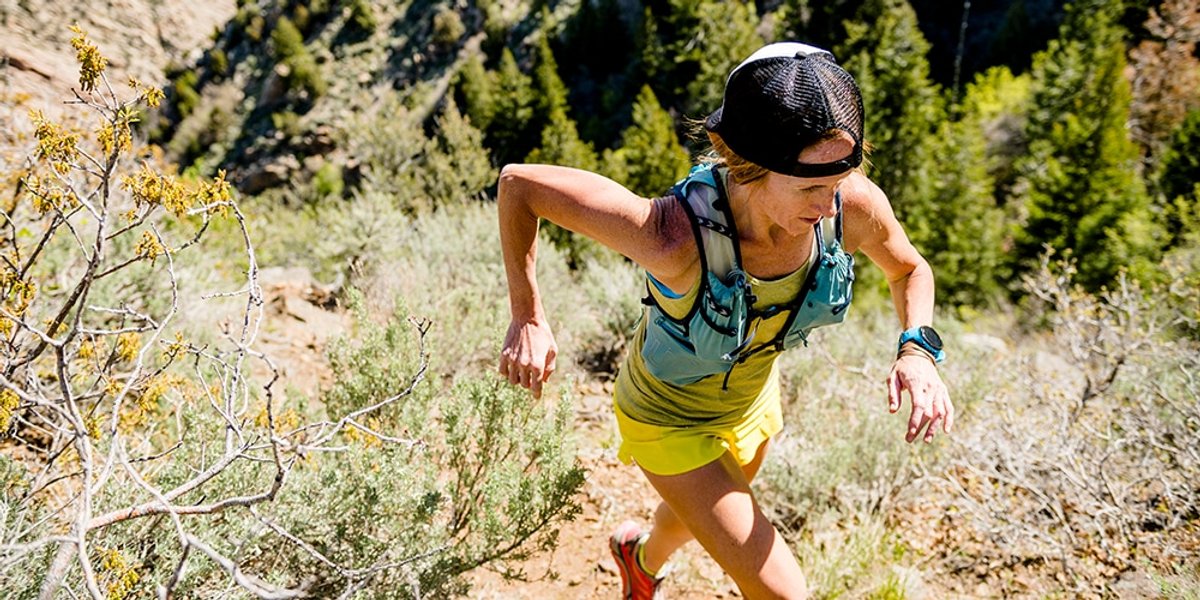
The Races
The Bighorn 100
I am elated to have already raced to the end of the Bighorn 100, especially after dropping out at mile 33 last year with a broken femur. Located outside of Sheridan, WY, the Bighorn 100 begins in Dayton, WY and hits total vertical gains of around 18,300 feet over the course of 100 miles. Physically, this was as challenging as I expected. Mentally, this was harder than anything I’ve ever done in my life due to: running through dense clouds and fighting off demons that begged me to quit, just so I could escape from the rain and endless miles of mud. A hundred miles changes you, there’s no doubt about it. Finishing F7 was a sweet reward for my efforts. Redemption is a huge spark that fuels the fire of success, and this year was no different.
UTMB (Ultra-Trail du Mont-Blanc)
The Ultra-Trail du Mont-Blanc is considered one of the toughest foot races in the world. It begins in Chamonix, France and then continues by circumnavigating the Alps clockwise, including Mount Blanc, by passing through Italy and then Switzerland. It covers a distance of nearly 103 miles with close to 30,000 feet of climbing. To qualify for the lottery, you have to earn enough points by competing in certain races. I was lucky to get drawn this year (I think!). This is definitely going to be the most challenging race I’ll ever do. I’m overwhelmed at the opportunity to have this dreamworld adventure with my husband and kiddos to cheer me on.
The Bear 100
This will be my fourth start and hopefully fourth finish in this race, which takes place the last weekend of September. It’ll be a quick turn around of 4 weeks after finishing UTMB. The course goes up and down with elevation gains hitting about 22,000 feet through the gorgeous autumn colors of the Cache National Forest, and if the timing is right, the beautiful harvest moon. This was my first 100-miler several years ago, and it holds a sweet spot in my heart.
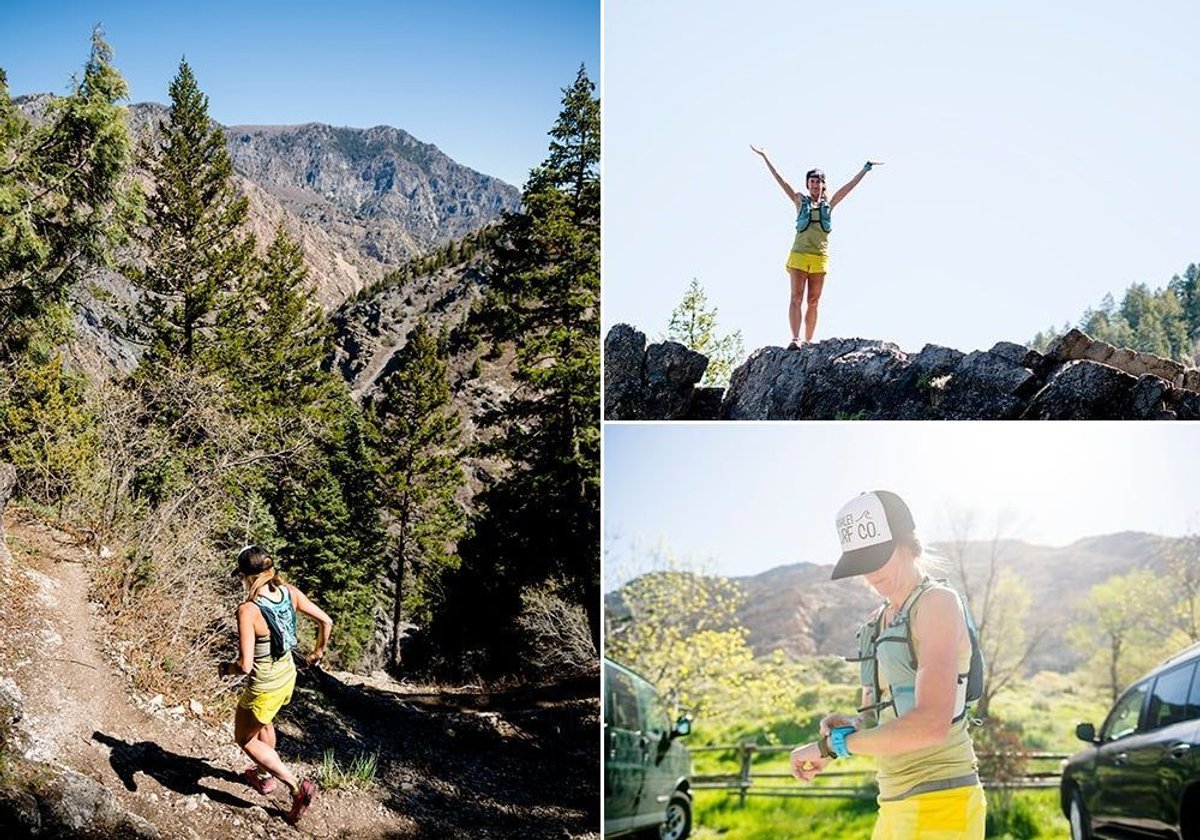
How to Train for a Hundred Miler
When I’m training for these races I like to feel strong, light, and fast. These practices are mine alone–I’m not a coach by any means and don’t have a coach. This is just what works for me.
On an average week, I’m typically running around 50 miles with near 10k of climbing. I enjoy building speed in my workouts, alternating between hard climbs and flatter terrain. I mix these up once or twice a week, based on feel and terrain. I use Strava during my runs and challenge myself in strides or sprints with various segments. This is fun because you get audio feedback halfway through each segment that can challenge (or annoy) you to match or beat your own PRs on different routes. Three weeks out before a race (specifically 100-mile races), I try and increase the volume with longer back-to-back runs not lasting over five hours of work. On those weeks, I aim for 70 to 75 miles and my vertical gain nears 20k. Most importantly, I try not to take myself too seriously. I want to show up race-ready, but happy and content with the training block I’ve just passed through.
When I’m not running, I like to vary my routines with yoga and interval bike classes. Yoga settles my mind and gets my body to stretch in ways I didn’t know were possible. I’ve noticed an amazing difference in my recovery by incorporating yoga into my routine. Cycling allows for speed and agility without the sensation of gravity holding me back. I love flying on the bike, and cycling’s freedom of movement uses the opposite muscles from running. It’s stabilized my core and promotes upper body strength as well.
I’m very lucky to also have an ultra running hubby. He understands the time and sacrifice it takes to put in the work. We do a pretty good job balancing our distance running with our home life with two active boys. Usually, I run early, and set a goal time to be back home. Does that mean some crazy early mornings? Sure does. During the school year, it’s nice to have a little more flexibility with timing and get out during the day. You just do whatever it takes and help each other out. I hope my kids see our commitment and determination to the sport we love and carry that over into their activities.
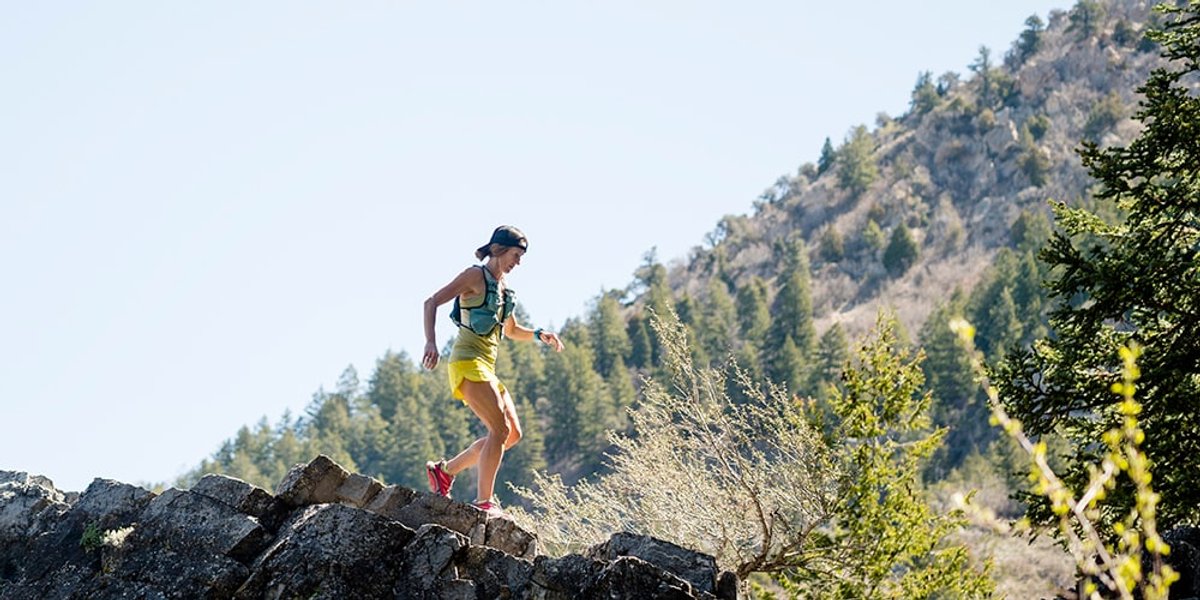
Common Questions
How do you psych yourself up for an ultra race?
When you build up to something for so long, you can’t help but be pretty excited about it. Putting in the tough work and backing off when it’s time to taper does something cool to your mind and body-creating an urgency to go, go, go. Trust your training and remember that adrenaline is a good thing and will help you get pumped up for racetime. The race is the reward for the hard work. One of my favorite quotes is, “I’m asking my body (in a race) to already do something I’ve already trained for.” – Kara Goucher.
Do you sleep during these hundred milers?
No, the faster you go, the sooner you’ll get done.
How about going to the bathroom?
Let’s just say you get creative.
What do you do to pass the time?
I love, love, love music. That helps me pass the time, keep a good steady pace, and it keeps my mind fresh. Podcasts and books are okay for me during training, but I need the tunes to keep me going through a race. Be mindful of others around you and use earbuds.
How do you set goals during a race?
Ultra races are unique in that you mentally break down these long distances in your brain by just running from aid station to aid station. If I’m running a hundred mile race, I’m looking at different point-to-point or aid station-to-aid station objectives on the small scale. Making small goals will hopefully help me achieve bigger overall race goals.

Recommended Trail Running Gear
- Trail Shoes: If you’re ready to invest in some trail shoes, there are many fantastic brands on the market. I’ve been wearing Hoka One One for almost five years now. I love the smooth ride with maximum cushioning and minimal drop.
- Socks: Definitely try out a few different socks that might interest you. I wear Injinji Toesocks. They make every style, in every length with various fabrics for year-round running. I got my first pair a few winters ago when I needed socks that would keep my toes warm in winter weather. These solved my dilemma immediately.
- Clothing: Almost anything goes, as far as clothing for trail running–just find something you feel comfortable in. I prefer running in shorts whenever possible. Tights are usually my go-to piece when the temps are under 35-degrees Fahrenheit. It’s always best to go for layers, as mountain weather can change drastically as you reach higher elevations.
- Watch: I’ve been using Suunto watches for several years now and do most of my training using heart rate zones and time. With outstanding wrist-based HR monitoring and data analysis, I’m able to see where I’m making progress and where I’m still able to do more work. There are multipart functions and extended battery life features that are vital for cross-training and longevity.
- Pack: Distance running gets easier when you have a great pack that stays put and doesn’t jostle around, no matter the size or weight of the items you’re toting. Ultimate Direction packs do just that. This year, they’ve nailed it with a new cinching mechanism that allows for on-the-fly adjustability, depending on the load you’re carrying. Ultimate Direction is all in with outstanding products making it easier for the average to elite runner to be self-propelled in their specific sport. They’ve even began a wearable gear department that features various jackets that are my number one choice when encountering bad weather.
So, you think you want to trail run? You really don’t need that much to get started. The most important thing you need is a place to run where you feel safe. At the end of the day, you can run trails in any type of gear, anywhere. Just get out there.
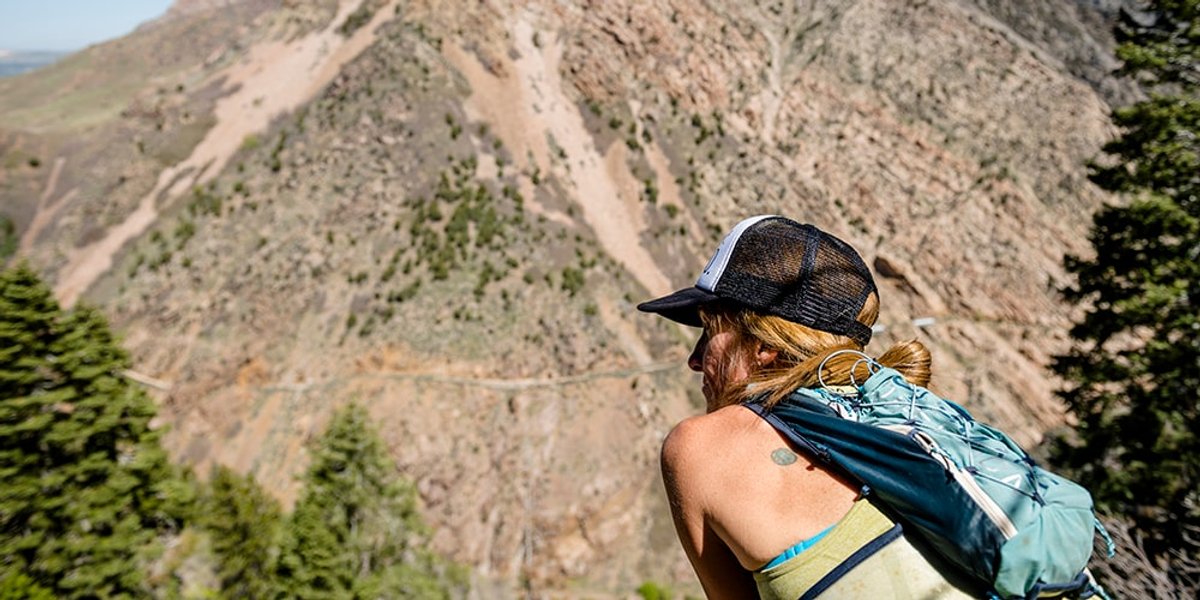
Tara Warren is a mountain runner living in northern Utah. When she’s not out on the trails, she’s chasing around her two energetic boys and adventurous hubby. She believes that life is short and we should get up, get moving and enjoy the beauty of what’s around us. You can follow her on Instagram @runwithtara.